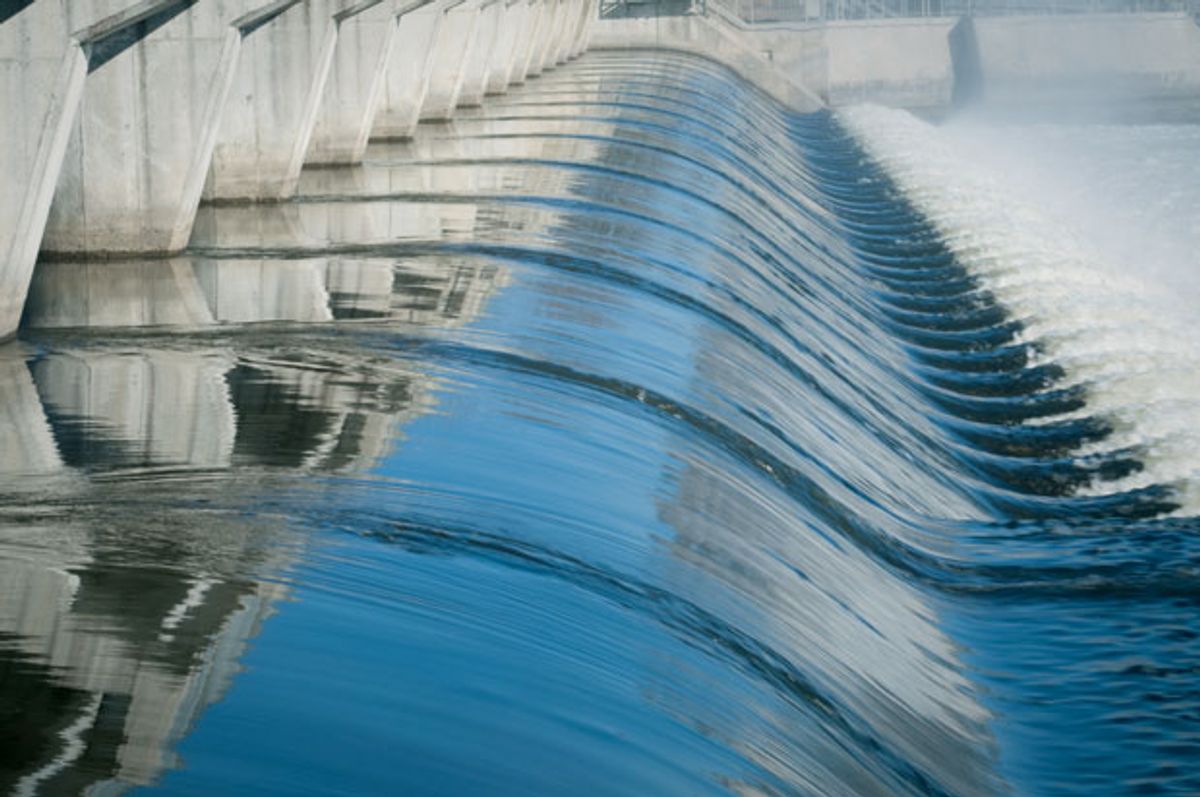Pumping water uphillto store energy in hydropower reservoirs is an idea that, by power grid standards, is as old as the hills that such “pumped storage” plants are built on. But with the rise of intermittent solar energy and wind power, this technology could soon experience a revival, experts say.
Japan is positioned to lead this renaissance. It has the largest number of pumped storage plants, capable of absorbing and discharging 26 gigawatts of power. Those plants are also technology leaders whose variable-speed pumps, developed in the 1990s, are uniquely adapted to shifting energy flows.
But Japan is not alone. China’s pumped storage capacity has more than doubled since 2008. And, in mature markets such as the United States and Europe, intermittent generation is accelerating pumped storage construction for the first time in several decades.
Ironically, what originally motivated pumped storage installations was the inflexibility of nuclear power. Nuclear plants’ large steam turbines run best at full power. Pumped storage can defer surplus nuclear power generated overnight (when consumption is low) to help meet the next day’s demand peak.
Japan’s utilities chose to install variable-speed pumps so that the plants could also help stabilize their grids. Whereas single-speed pumps rotate synchronously with the grid, variable-speed pumps’ asynchronous motor-generators can adjust a plant’s charging and discharging to simultaneously balance power supply and demand, thus regulating the grid’s AC frequency.
Variable-speed equipment is larger and costs more. But it reduced the need to ramp up and down Japan’s oil-fired generators, a process that wastes pricey imported petroleum.
In post-Fukushima Japan, these nimble storage plants have a new opportunity to shine: managing the more than 10 GW of solar and other renewable energy capacity that has been installed in Japan since the March 2011 meltdowns and the subsequent idling of the country’s nuclear reactors.
Concerns about the rising levels of intermittent generation prompted Japan’s government to propose tougher rules for renewable installations in January. But international experts in integrating renewables say that Japan’s utilities could manage their new grid challenges by redeploying the pumped hydro plants to absorb spikes in demand or surpluses of renewable power. “A substantial amount of Japan’s renewable energy transients can be handled by the pumped storage,” says Per Christer Lund, a principal consultant at the Singapore Clean Technology Center, run by Norway-based risk management and certification giant DNV GL.
Lund says that Japan’s vertically integrated utilities appear to be reserving pumped hydro plants to serve the traditional and more parochial role of complementing nuclear power stations, which the utilities hope to begin restarting this year. But he predicts that Japan’s shift to competitive power markets by 2020—which would separate generation from transmission and distribution—will drive more flexible use of the pumped storage plants.
Experience with competitive markets in China, Europe, and the United States, however, tells us they can also create new hurdles for expanded use of pumped hydro storage. New plants may be far cheaper than batteries—by as much as 95 percent per kilowatt-hour, according to a January 2015 report by Citibank. [PDF] But most competitive markets do not currently pay for grid services, such as frequency regulation offered by advanced pumped storage plants. Ning Zhang, a power systems expert at Tsinghua University, in Beijing, says a lack of market payments for grid services explains why China has so far eschewed variable-speed equipment for its pumped storage.
Competitive markets can also bring unpleasant surprises. In Europe, a slide in anticipated profits poses a challenge for big, new pumped storage plants, such as those being built in Switzerland. Their backers plan to charge up the plants when power is cheap and sell when market prices peak. But surging solar power generation is blunting the demand peaks, thus narrowing daily fluctuations in wholesale power prices.
Greenhouse-gas mandates will ultimately force the use of storage, according to Scott Flake, director of power generation for the Sacramento (Calif.) Municipal Utility District (SMUD), whose planned US $700 million pumped storage plant is one of two approved last year by federal government regulators, after a two-decade hiatus.
Flake says that SMUD’s variable-speed, 400-MW plant will take over grid-regulation tasks now performed by natural gas–fired plants, helping the utility comply with greenhouse-gas restrictions under California’s carbon cap-and-trade program. “We see pumped hydro as a way to provide grid-management services in a carbon-free environment,” says Flake.
Paris-based equipment supplier Alstom Power Systems, meanwhile, is developing a low-risk option for the pumped storage renaissance: retrofitting single-speed storage plants. That means finding a way to squeeze larger and heavier variable-speed equipment into existing subterranean vaults. In 2012 the European Commission awarded an Alstom-led consortium €13 million ($15 million) to prove that it’s possible at a 36-year-old plant in France. The project is due to be completed by the end of 2017.
This article originally appeared in print as “A Renaissance for Pumped Hydro Storage.”
